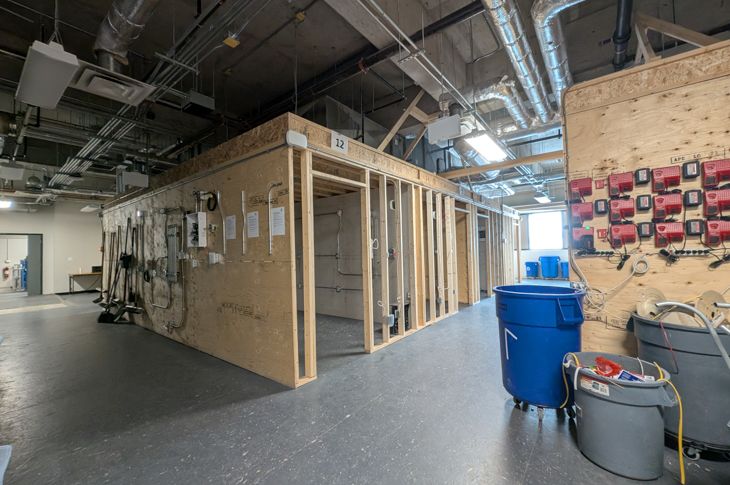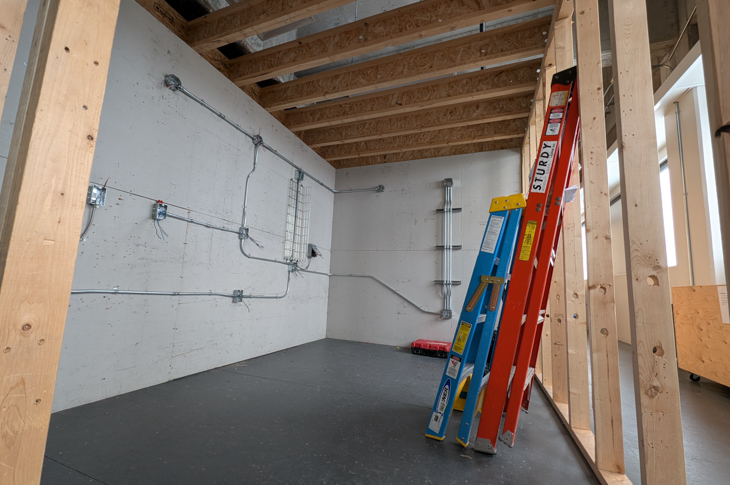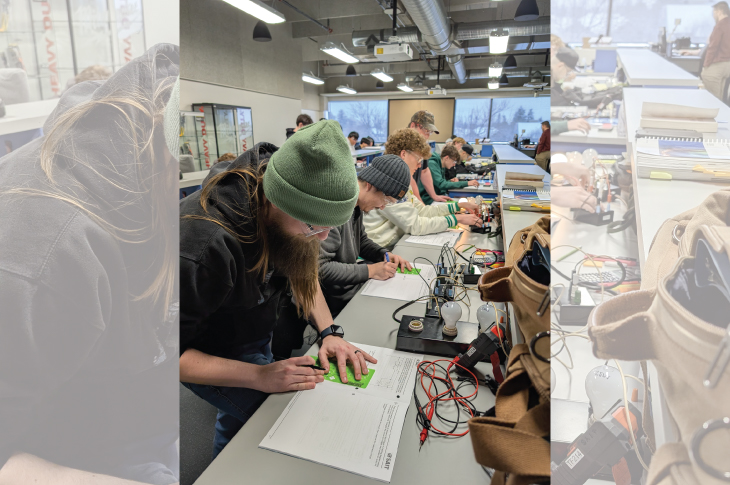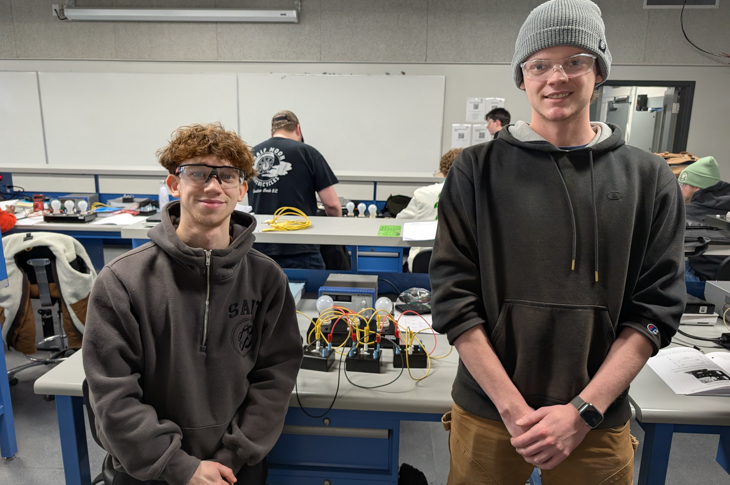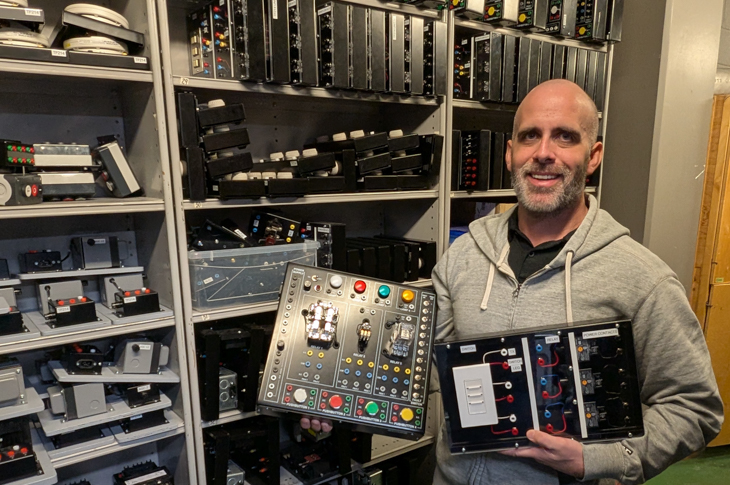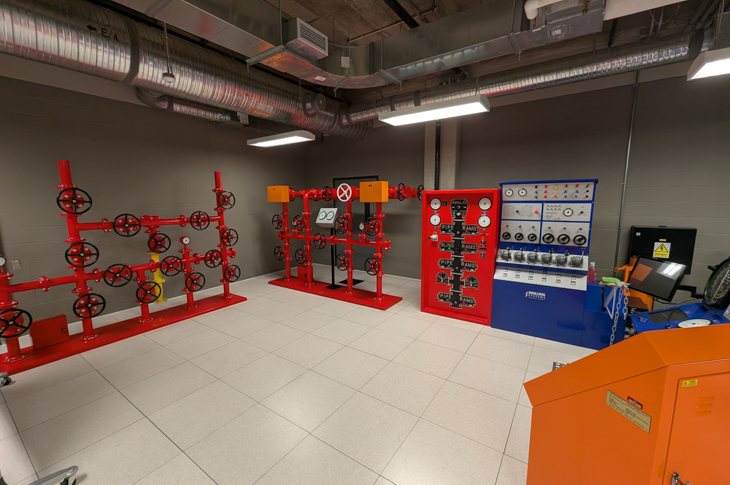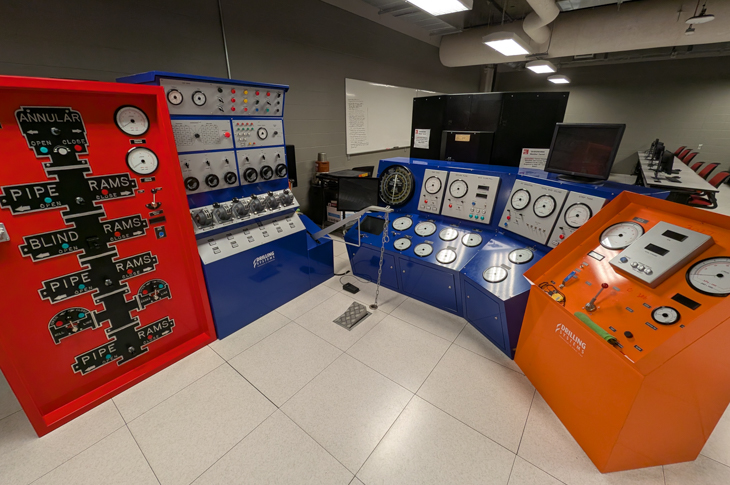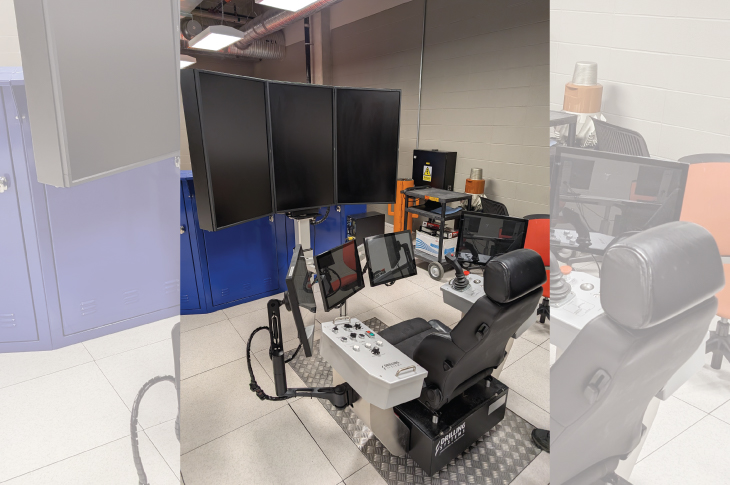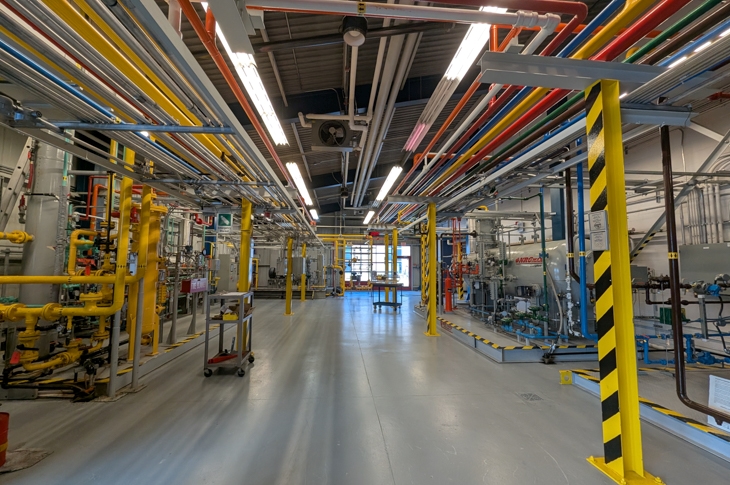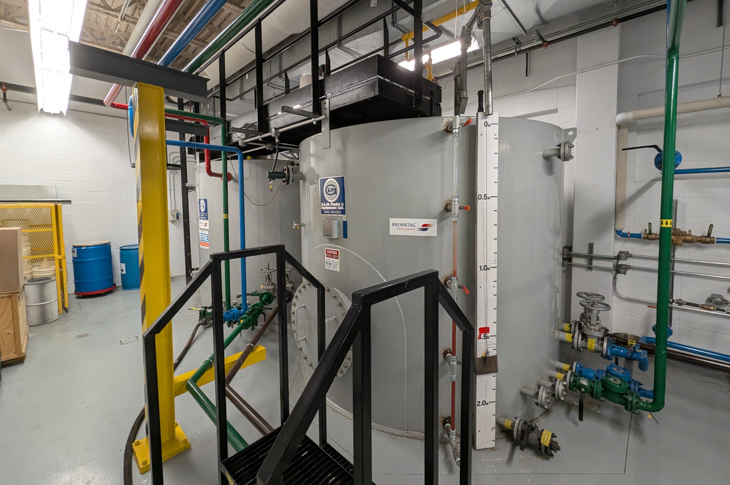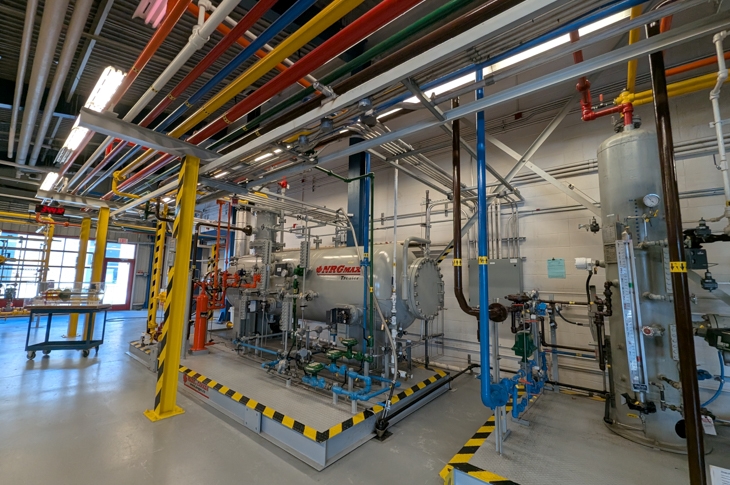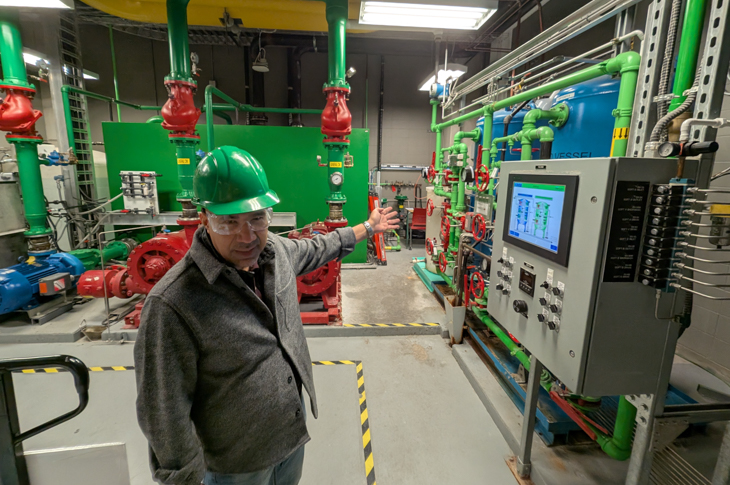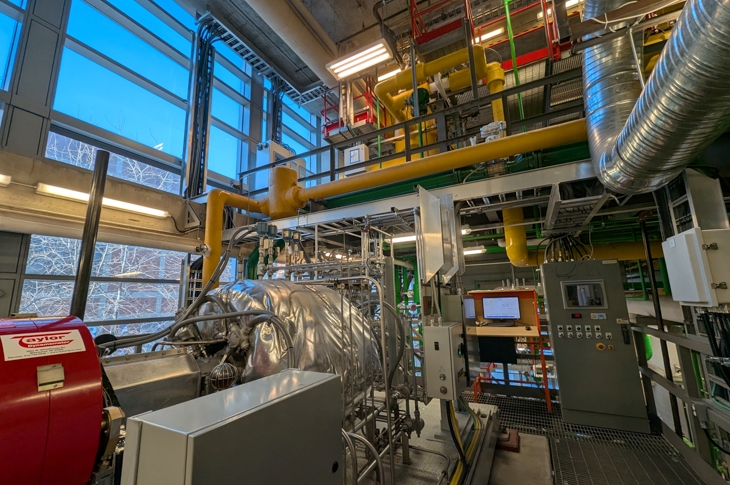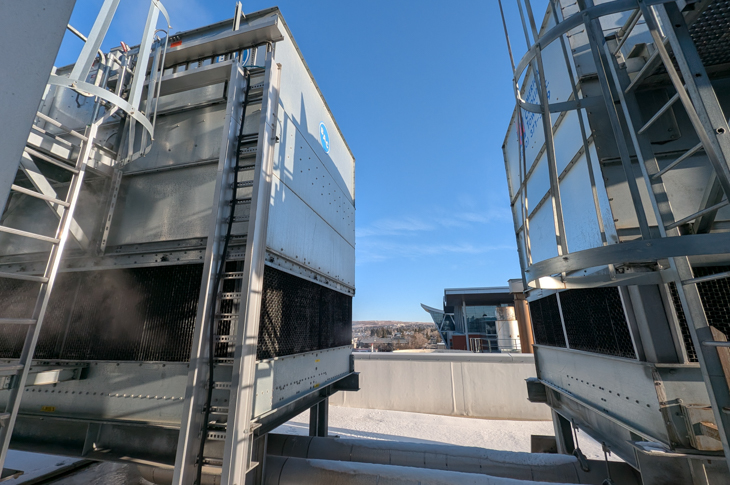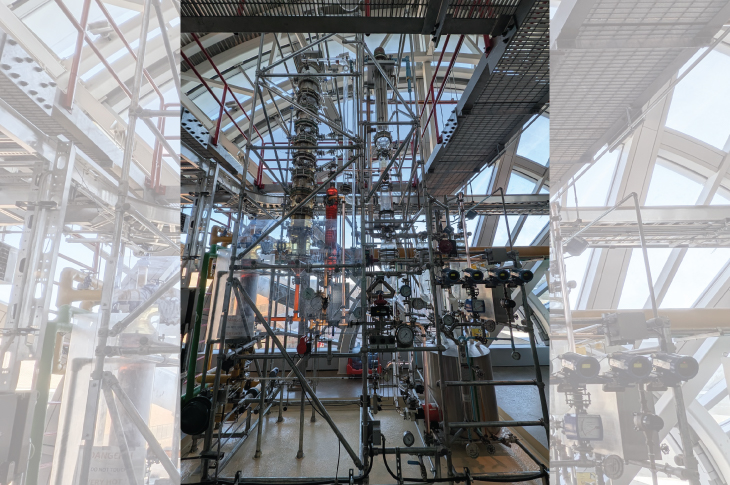See inside SAIT’s coolest energy labs
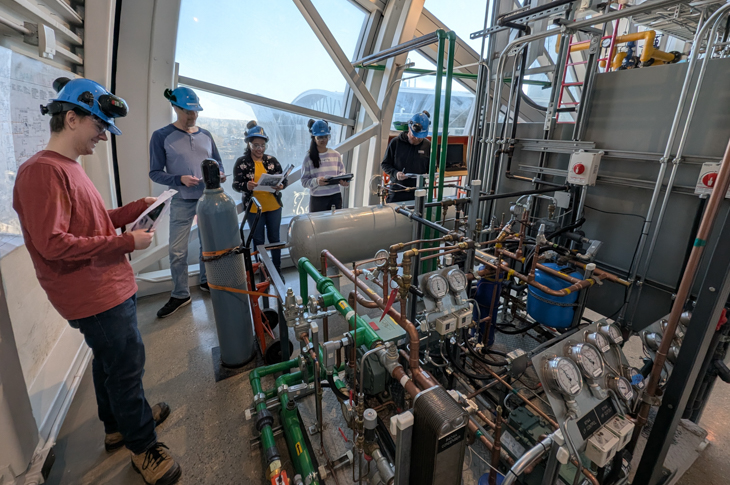
Wire a mini house, operate a working power plant and purify water in these state-of-the-art facilities
Maybe you’ve thought about a career in energy but don’t really know what the day-to-day would look like.
Luckily, SAIT is all about demystifying industry so you’re ready for whatever your first day on the job brings. It’s why many of our labs in the MacPhail School of Energy are designed and equipped like real workplaces — and why so many of our grads get hired (87% in 2023).
Tour with us through the most impressive, surprising and straight-up cool labs to fuel your energy education.
Pre-employment Electrician Lab 🏠
What makes it cool: Wiring a mini house

This space is uniquely for students in the 12-week Pre-employment Electrician program who are wondering if the electrical trade is for them or haven’t had field experience yet. With a design inspired by SAIT’s first-year apprenticeship lab, it’s made up of two components: a shop and a lab.
The shop is made up of 15 pods with two students assigned to each, taking turns practicing commercial and residential skills. On the commercial side, students bend and install electrical metallic tubing onto a plywood wall and feed wires through it to outfit a building for everything from three-way switches to emergency exit lighting. For residential, students install the electrical components needed for a house — dryer and oven receptacles, kitchen counter GFCI outlets (designed to prevent electrical accidents), outdoor receptacles and doorbell circuits. Using electrical drawings, they build everything to meet electrical code standards.
In the lab space right next door, students learn theoretical concepts, practice electrical drawings and test their knowledge with real equipment — from transformers to lighting relays.
“We ask industry partners, ‘If you wanted to hire a student out of this program, what skills would be valuable to you?’ Their feedback shapes what we teach because our students deserve to see the payoff at the end,” says Instructor David Peard.
“We want to make sure employers would want to hire program graduates. And we want to empower students to say, ‘I’m confident I can do this.’”
Mathison Drilling and Geoscience Lab Suite 🕹
What makes it cool: Simulating drilling through rock

Traditional drilling technologies meet new ones in this hands-on space for students in petroleum programs.
Drilling has a number of applications — from oil and gas extraction and carbon sequestration to the production of emerging resources such as geothermal energy, hydrogen, helium and lithium (a byproduct within the salt brines).
Using either a conventional control system or a modern cyber chair, students drill virtual wells to learn the drilling process and the responsibilities of a driller. Analog and digital gauges showing parameters from the hoisting, circulating and rotary systems allow students to monitor the rig's performance as well as downhole drilling conditions. A simulated drilling environment provides low-risk opportunities to practice challenging drilling techniques, as well as identify and resolve drilling problems.
Similar to how pilots train on flight simulators, SAIT's drilling simulator is used by industry to train and evaluate drilling personnel.
Water Treatment Lab 🌊
What makes it cool: An industrial water treatment train

Using the same — though scaled-down — cutting-edge technologies found in operational water and wastewater treatment facilities, students studying one of MacPhail’s sustainability programs use this space to gain skills in water processing, recycling and waste disposal, all with the goal of minimizing environmental and human health impacts.
Students dive into both domestic and industrial water treatment processes — a unique advantage come graduation. A water treatment train sourced from France comprises a series of tanks, tubes and equipment designed to filter out contaminants and purify water.
They also conduct experiments to master the techniques used in water and wastewater sample analysis.
View this post on Instagram
Rance Fisher Wellsite Production Education Centre 🛢
What makes it cool: “Salad dressing”

To understand what happens in this ultra-cool space, let’s talk about oil-based salad dressing. After you mix it up, it inevitably settles back into layers you can see — the oil sits on top.
A pumpjack at an oil well extracts an emulsion made of water-brine, oil and natural gas that — like salad dressing — separates into its constituents when left to stand for a while. It’s up to the wellsite and its workers to separate out the components of the emulsion for use. That’s what petroleum programs students learn in this working wellsite on campus, an elaborate system of colour-coded pipes, equipment and tanks to process and store fluids.
Of course, you won’t find real oil and gas here, but a SAIT-made emulsion they call — you guessed it — “salad dressing.” It resembles and acts like an emulsion you would extract from the earth, but is made of mineral oil instead of crude oil, plain water instead of salt water or brine, and instead of natural gas, nitrogen that’s been captured from the air. Students run the emulsion through a test separator which separates the gas, water and oil, then conduct tests to validate how much is being produced — critical to understanding the business side of energy.
“We have the benefit of all this equipment and students have the benefit of actually doing — that makes a big difference,” says Uwe Brandt, Academic Chair, Petroleum, MacPhail School of Energy. “Students get that hands-on applied knowledge here, and they really shine because the theoretical concepts are no longer esoteric for them.”
It's worth mentioning that real companies also use this wellsite to research and develop industry innovations, in partnership with SAIT’s Applied Research and Innovation Services.
Cenovus Energy Centre 🏭
What makes it cool: Four floors of “wow” in a working power plant

Learners studying process operations will find themselves practicing with equipment in this scaled-down working power plant on campus. The plant is a closed loop system. First, water is pumped into a boiler, which adds heat, turning the water into steam. This high-pressure steam goes into a turbine and expands, rotating the turbine and generating electricity in a magnetic field. The steam expands, loses energy and condenses back into water. The water is pumped into a boiler — and the cycle repeats.
“When everything is running, the plant generates about 400 kilowatts of energy — that’s enough to power 200 houses,” says Jay Campo, Academic Chair, Process Operations, MacPhail School of Energy. “This electricity helps power SAIT campus.”
On each level of the plant you’ll find amazing specialized equipment across a number of fields. Students learn the mechanics and instrumentation of huge turbines and boilers, including one that produces 10,000 pounds of steam per hour. They learn about water treatment, a step that maintains the integrity of the plant equipment. They practice synchronizing the frequency of electricity generated with the frequency of electricity in the grid — crucial to everyone’s safety. On the roof, they can see the cooling towers in action.
The fourth floor is home to a massive glass distillation column, used in chemical processing to separate liquid mixtures based on their boiling points. This showstopper is a smaller working replica of a steel version you’d find at an oil refinery, only made of glass so students can see what’s happening. You’ll also find a working HVAC system on this floor, complete with giant air conditioning units, hot water boilers and a refrigeration unit.
AltaLink Simulator Lab 💡
What makes it cool: Powering a simulated province

SAIT was the first Canadian post-secondary institution to have a leading-edge power system simulator, sponsored by AltaLink. Electrical Engineering Technology students in their fourth year use this massive piece of equipment to simulate and study all the components of a power system similar to Alberta’s grid — from generation and transmission to distribution and system protection.
Students in their fourth semester test theoretical concepts learned throughout their program and see what would happen in a real system. They learn how to synchronize generated electricity with the existing grid, then send some of it through a transmission system. The power is then distributed for residential or commercial purposes, and carefully monitored to protect simulated equipment, such as power lines and transformers.
“The unit is quite powerful as a learning tool — it’s custom-built and allows us to simulate a power system as real as we can,” says Darko Stelkic, Academic Chair, MacPhail School of Energy. “Our program puts theoretical knowledge into practice with specialized hands-on training that’s useful from day one of entering the workforce.”
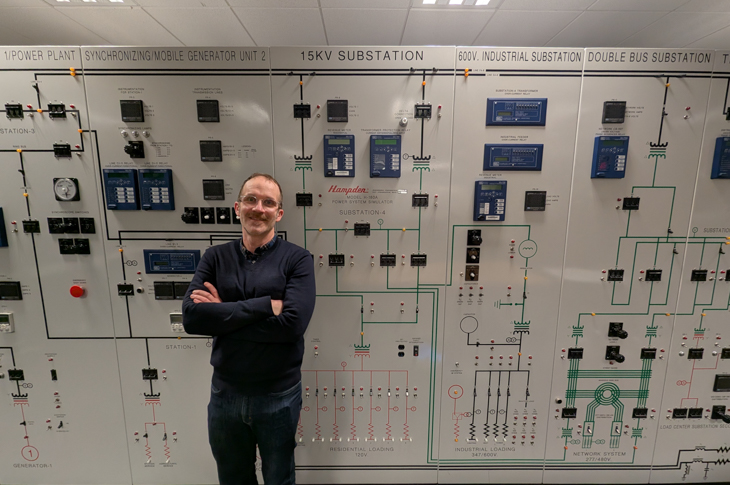
Darko Stelkic, Academic Chair, MacPhail School of Energy stands by a custom-built unit simulating Alberta’s grid. The simulator gives students the chance to test synchronizing, transmitting and distributing electricity.
Flow Lab 💧
What makes it cool: A glimpse into the energy industry and rows and rows of flow meters

SAIT’s instrumentation programs
prepare students to measure and interpret process variables in fluid systems, including level, pressure, temperature, flow, and analysis of composition and quality. These five measurements form the foundation of accurate process control in today’s industries.
In the Flow Lab, as you may have guessed, students use special devices to measure flow — the movement of liquids or gases in response to applied force or pressure differences. The lab models measuring processes that take place in the oil and gas industry, both upstream and downstream. Students use the captured data to adjust pumps, valves and direction of flow as needed for production optimization and resource management.
But what if you can’t trust your measuring device? Part of the students’ training includes simulating scenarios when flow measuring devices become more or less accurate and reliable.
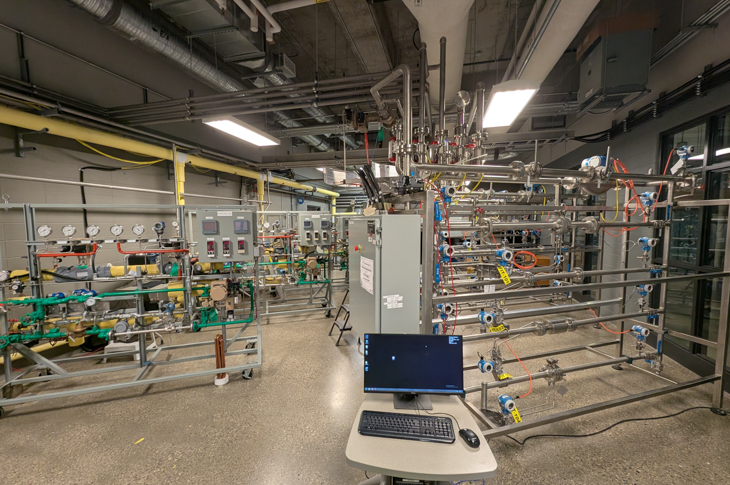
Full of flow measuring devices, the Flow Lab offers instrumentation students hands on experience capturing and using data to drive decisions.
Fuel the future with the MacPhail School of Energy
Get hands-on experience with equipment used in industry to kickstart your career in sustainability, instrumentation, electrical, petroleum or process operations.
Learn more

Oki, Âba wathtech, Danit'ada, Tawnshi, Hello.
SAIT is located on the traditional territories of the Niitsitapi (Blackfoot) and the people of Treaty 7 which includes the Siksika, the Piikani, the Kainai, the Tsuut’ina and the Îyârhe Nakoda of Bearspaw, Chiniki and Goodstoney.
We are situated in an area the Blackfoot tribes traditionally called Moh’kinsstis, where the Bow River meets the Elbow River. We now call it the city of Calgary, which is also home to the Métis Nation of Alberta.
